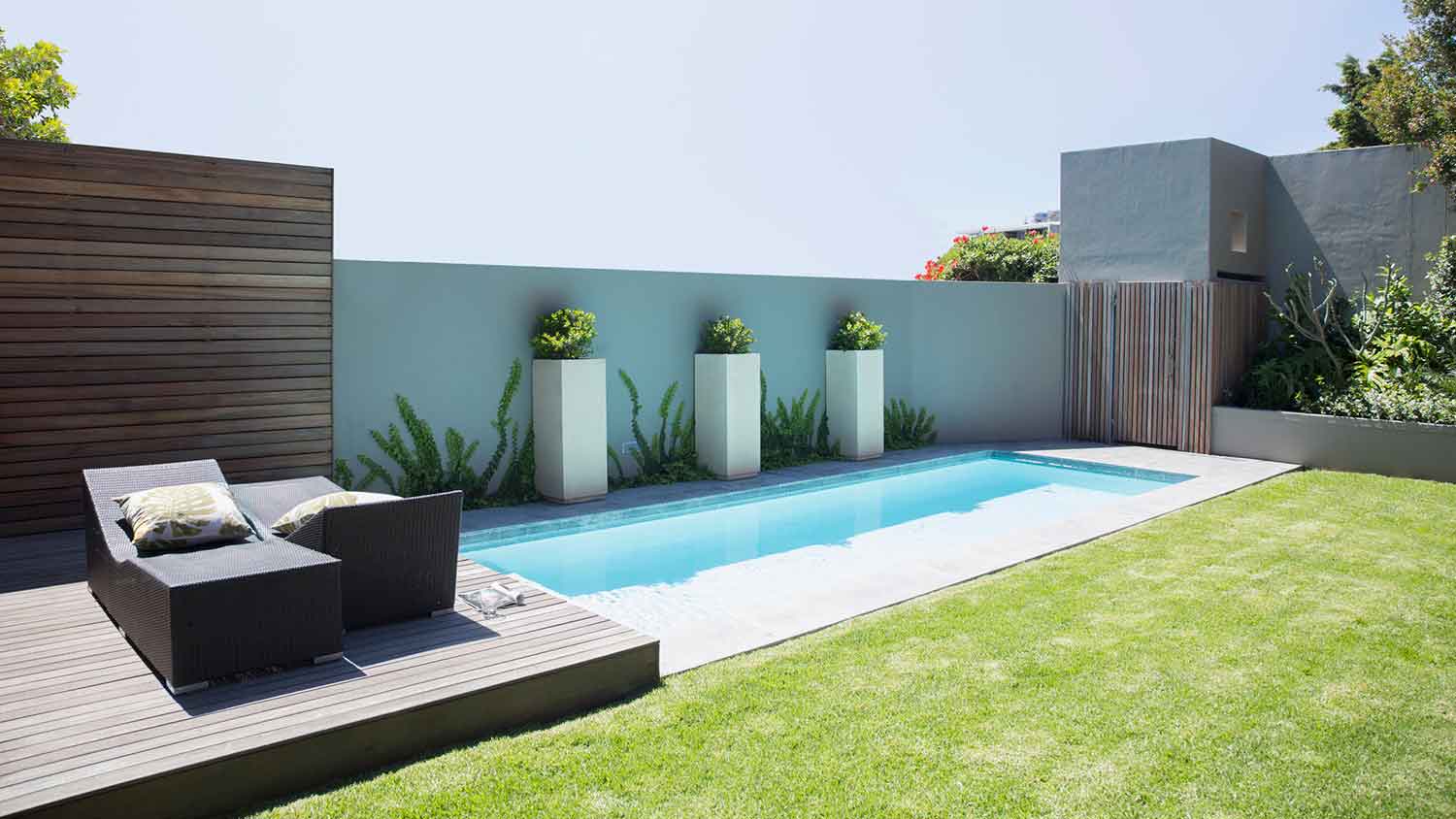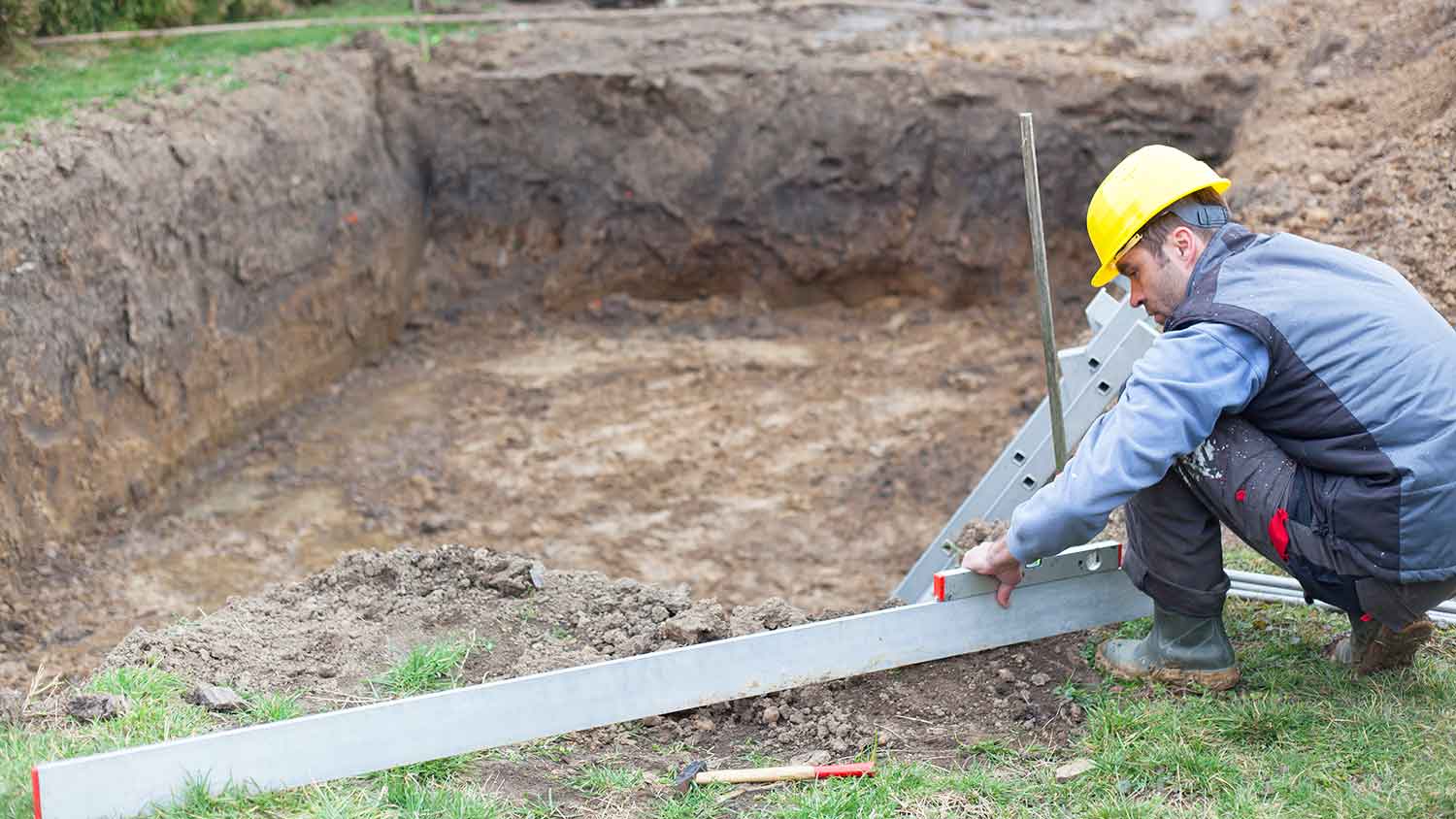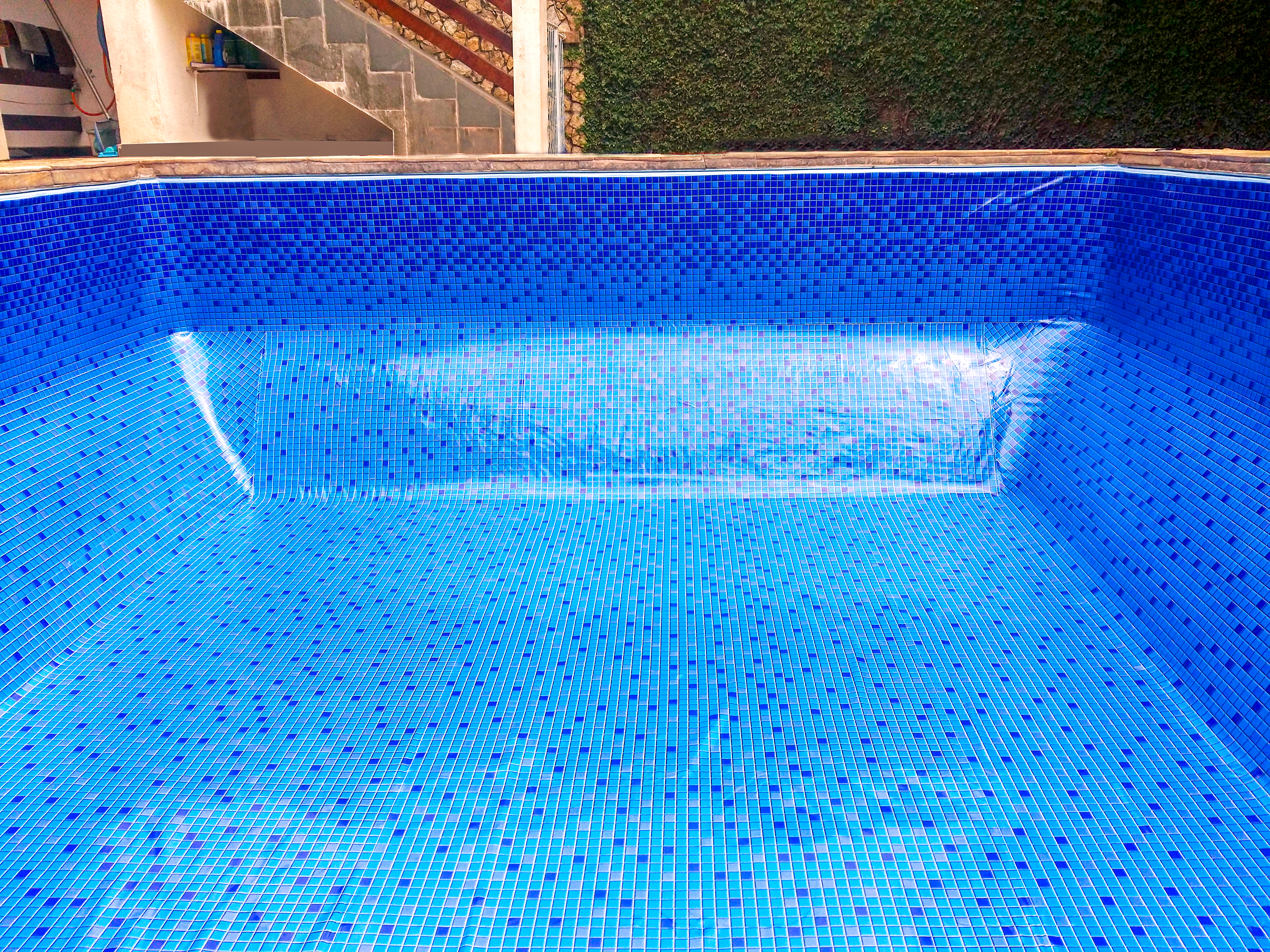
If you’ve been considering installing a new pool in the Buckeye State, this guide will help you understand inground pool costs in Columbus.
A shipping container pool costs $35,000 to $65,000, with an average of $50,000. You’ll need a pro’s estimate since costs range significantly based on model, installation, and extras.


Shipping container pools cost $15,000 to $100,000, with most homeowners spending around $50,000.
Size significantly impacts the price, with smaller units averaging $30,000 and large models reaching $62,000 to $67,000.
Excavation and site prep for in-ground installation can add $500 to $3,050 for digging, $700 to $2,200 for soil testing, and $800 to $5,500 for land surveys.
Brand selection affects total cost, with Ecopool® starting at $30,000, Modpools® starting at $32,500, and Trekpools™ starting at $40,000.
Labor and additional contractors contribute significantly to total project costs, with pool installers charging $50 to $150 per hour.
The cost of a shipping container pool depends on the size. Most shipping containers are 8 feet wide and 20 feet to 45 feet long. You might find modular pools that are slightly shorter at 12 feet long or slightly larger at 12 feet wide, but that’s not the norm. The larger the pool, the more it will cost.
| Dimensions (Feet) | Average Cost (Materials Only) |
|---|---|
| 8x12 | $30,000 |
| 8x20 | $39,000 |
| 8x30 | $47,000 |
| 8x40 | $62,000 |
| 12x20 | $43,000 |
| 12x40 | $67,000 |
In-ground pools are considerably more expensive than aboveground pools because they require excavation. This will add a few extra costs, including:
Soil testing costs: $700–$2,200
Land survey costs: $800–$5,500
Pool excavation costs: $500–$3,050
It’s a good idea to consult your contractor before putting in your pool so they can help you understand the full extent of what needs to be done to prep your land.
Reinforcements are part of the cost of installing an in-ground pool. This helps ensure that the shell won’t crack underneath the weight of the water and swimmers. Contractors will need to level your yard before installation. Some soil (like clay soil) is harder to work with, and you’ll need stronger supports, or you’ll need to backfill with a better type of soil after the excavation.
If your pool is aboveground, they’ll level your yard and lay down a foundation made from a concrete slab with gravel. If reinforcements are required, they’re usually included in your container pool kit. Here are some common costs:
Leveling a yard: $0.40–$2 per sq. ft.
In-ground pool reinforcements: $1,000–$3,000
Fill dirt: $150–$600 per truckload
Gravel: $1–$3 per sq. ft.
Concrete slab: $4–$8 per sq. ft.
The pool liner transforms your shipping container into a watertight pool, and the liner is included with most prefab container pools. If you need to purchase one (whether you’re converting a shipping container DIY or replacing an existing liner), you can expect to spend $500 to $900 on an aboveground pool liner and $1,200 to $2,100 on an in-ground pool liner. If you choose a fiberglass liner instead of vinyl, you may spend as much as $5,000.
| Pool Liner | Average Cost |
|---|---|
| Aboveground vinyl liner | $500–$900 |
| In-ground vinyl liner | $1,200–$2,100 |
| Fiberglass liner | $5,000 |
Most container pools come prefabricated, meaning the shipping container has already been upcycled into a pool and is ready for installation. If you hire a company to build a custom pool, prices can soar beyond $100,000.
The main benefit of a custom pool is the sizing. Since shipping containers come in standard sizes, sizing is limited with a prefab model. Depending on the brand, you can get a custom pool that’s as wide as 14 feet—nearly twice the width of a standard prefab model.
There are a few major brands that sell shipping container pools. Like most products, different brands have different price tags. You’ll spend more on a high-end brand like Trekpools™ (which starts at $40,000) or Modpools® (which starts at $32,500). Ecopool® is slightly more affordable (starting at $30,000) and allows you to connect containers for more customization. This can make the costs quickly skyrocket compared to other brands with more standard layouts.
You’ll need to hire a pool contractor, which costs $50 to $150 per hour, to install your shipping container pool. Labor will make up 25% to 50% of the total project cost. Your contractor will be at the helm of the installation, leading the charge every step of the way—from choosing the best model for your backyard and prepping the land to successfully installing the pool and finishing the pool area.
Pool installation goes beyond installing the actual pool. As such, you may need to hire several different contractors. These include electricians who can handle all electrical aspects of the installation (like lighting and heating) and plumbers who can connect your pool to the sewer system.
Here are some contractors and their hourly rates, though your pool contractor may subcontract some of these pros and include the cost in your quote:
Electrician: $50–$130 per hour
Plumber: $45–$200 per hour
Landscaper: $50–$100 per hour
Fence contractor: $35–$65 per hour

Once you choose a contractor and decide on the size and location of your pool, there are a few extra costs you may encounter. Add-ons like heating, hardscaping, and landscaping all come with different price tags.
The permit to install a pool costs between $400 and $1,800, depending on local laws. Your contractor will obtain the correct permit before they begin construction.
If you want to extend the length of your pool season or don’t live in a very warm area, consider heating your pool. Since container pools are on the smaller side, the cost to install a pool heater is between $1,000 and $3,000.
Shipping container pools are too shallow for a diving board, but you can customize your pool with other accessories. These include built-in lighting so you can safely use your pool at night, as well as pool covers, ladders, and jets.
| Accessories | Average Cost Range |
|---|---|
| Lighting | $20–$1,700 each |
| Solar pool cover | $75–$300 |
| Winter pool cover | $75–$225 |
| Automatic pool cover | $12,000–$22,000 |
| Slide | $1,500–$5,000 |
| Waterfall feature | $1,500–$5,000 |
| Stairs | $500–$5,000 |
| Wall window | $4,500–$9,000 |
| Jets | $2,000–$3,000 |
| Ladder | $600–$800 |
Most pool landscaping costs $700 to $3,300. At a minimum, you’ll need to do some minor landscaping or hardscaping because this project disrupts your existing landscape. Homeowners may choose to lay down grass seed, install sod or gravel, or add decorative boulders and shrubbery to finish the look of their pool area.
The cost to install a pool deck or patio is anywhere from $300 to $12,000. For an aboveground pool, you’re looking at a wood or composite deck, which costs $300 to $7,800. For an in-ground pool, you’d install a patio made from a range of hardscaping materials, like pavers or stones. Costs range between $3 and $40 per square foot.
In most areas, you’re legally required to fence in your pool area for safety. A pool fence costs anywhere from $1,500 to $10,000, depending on the type of fence and size of the area. Expect to spend $15 to $25 per linear foot, with chain link being the most affordable option.

Hiring a local pool installation pro costs more upfront, but you benefit from proper engineering, safe setup, and long-lasting performance. Pros bring the right equipment, knowledge of structural requirements, and experience handling pool plumbing, filtration, and electrical systems—helping prevent costly mistakes and ensuring the pool meets safety standards.
Installing a shipping container pool involves structural modifications, site preparation, plumbing, electrical work, and compliance with local codes. Here are some of the top reasons to work with a pro:
Professionals ensure the container is structurally reinforced, properly insulated, and treated to resist corrosion and long-term water exposure.
They know how to handle excavation, leveling, and drainage requirements so the pool sits securely and safely on your property.
Hiring a pro reduces the risk of leaks, pump failures, electrical hazards, or improper filtration setup—issues that can be expensive and dangerous if installed incorrectly.
Many installers can bundle services such as decking, fencing, landscaping, or pool equipment setup to help streamline the entire project.
If you want to take on some tasks yourself, here are a few DIY steps that can help reduce time and labor costs:
Clear the installation area by removing debris, outdoor structures, or vegetation to ensure the site is accessible.
Confirm local permitting and zoning requirements ahead of time so your installer can move forward without delays.
Plan and mark where you want utilities, such as power and water lines, to connect to the pool to help the installer design an efficient layout.
The big benefit of shipping container pools is that they can be more affordable than traditional pools, particularly if you want an in-ground pool. Nonetheless, there are still ways you can save on the total cost:
Stay aboveground: Certain aboveground container pools may be costlier than traditional aboveground pools, but an aboveground container pool still costs less than an in-ground container pool.
Choose the most affordable size: If your household has one or two people, you can save money with a smaller container pool. For four people, opt for a minimum size of 8-by-30 feet.
Install your pool during the offseason: The best time to buy a pool is in the fall. Before winter, you may be able to find deals from builders and manufacturers. Pool supplies, fencing materials, and certain landscaping items may be on sale.
Skip the extras: To save money on the cost of building a pool, avoid unnecessary extras like waterfall features, slides, lush landscaping, or fancy pool covers. Go for only what you need.
The return on investment (ROI) for a pool varies between 5% and 56%, depending on several factors. On average, aboveground pools add around $250 of value, while in-ground pools add around $36,700, and it varies with location.
To determine the overall value, look at your local market. Pools are more popular in warmer states like Florida, California, and Texas. Check out local listings to view the price difference of similar homes with and without a pool. If the asking prices are similar, it’s a sign you may not get the biggest bang for your buck.
Let your pro know the exact size and model of the shipping container so they can plan for structural reinforcement and plumbing needs.
Discuss where you want the pool installed and share details about site access, grading, and any required foundation or support pads.
Ask what utilities you’ll need to prepare—such as electrical hookups, drainage, or water lines—before installation begins.
Confirm whether there could be added costs for issues like crane access, unexpected soil conditions, or required permits.
If you're considering extras like decking, heating systems, or custom finishes, ask whether it’s cost-effective to bundle those upgrades with the installation.
Home is the most important place on earth, which is why Angi has helped more than 150 million homeowners transform their houses into homes they adore. To help homeowners with their next project, Angi provides readers with the most accurate cost data and upholds strict editorial standards. We extensively research project costs to develop the pricing data you see, so you can make the best decisions for you and your home. We rely on reputable sources, including the U.S. Bureau of Labor Statistics, academic journals, market studies, and interviews with industry experts—all to ensure our prices reflect real-world projects.
Want to help us improve our cost data? Send us a recent project quote to [email protected]. Quotes and personal information will not be shared publicly.
From average costs to expert advice, get all the answers you need to get your job done.

If you’ve been considering installing a new pool in the Buckeye State, this guide will help you understand inground pool costs in Columbus.

Need to update the look and feel of your pool? Use this guide on pool liner replacement cost to see how much this pool project will set you back.

The cost of pool liner replacement in Columbus depends on the size and shape of your pool, as well as the liner material and type. Here’s how the costs break down.

The type of pool finish you choose is the best way to both show off your personal style and protect your pool in the long run. Let's walk through your options for pool finishes.

Ready to say goodbye to your swimming pool and hello to lush, green grass? Learn how to fill a swimming pool with dirt to ensure proper drainage for an even yard.

Hiring the right pro to build your pool is critical for a successful project. Find out what questions to ask pool builders to find the right match.